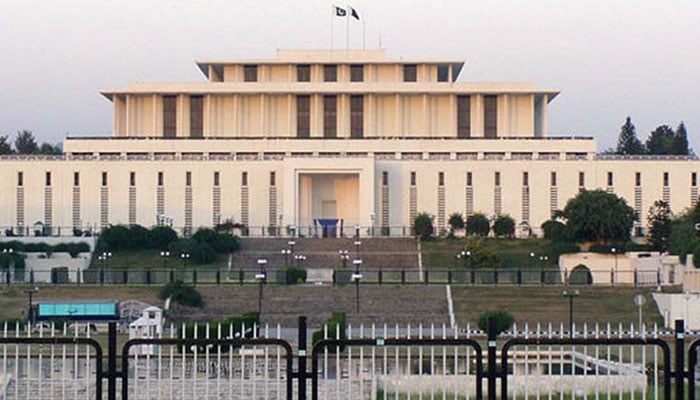Senators, MNAs and MPAs to vote via secret ballot in NA and all provincial legislatures
KARACHI: As the Pakistan Peoples Party (PPP) and the Pakistan Tehreek-e-Insaf (PTI) speed up their efforts to rally necessary support ahead of the presidential elections slated for March 9, it is imperative to understand how the country’s head of state is elected, The News reported on Sunday.
PPP’s Asif Ali Zardari, who has the backing of Pakistan Muslim League-Nawaz (PML-N), Muttahida Qaumi Movement-Pakistan (MQM-P), Pakistan Muslim League-Quaid (PML-Q) and others, is eyeing his second presidential term and is set to contest for the coveted post against Mahmood Khan Achakzai who has been nominated by the PTI-backed independent candidates, who have since joined the Sunni Ittehad Council (SIC), as their presidential candidate.
As per Article 41 of the Constitution, the president is the country’s head of state and has the duty to “represent the unity of the republic.” Also, the office holder has to be a Muslim, cannot be younger than 45 years of age and has to qualify to be elected a member of the NA.
The election of the president commences with the ECP issuing a date for the election. For Election 2024, this step of the process has already been completed.
Next comes the stages of submission of nomination papers, the deadline for which expired a day earlier on Saturday (March 2) and the submission of nomination papers with presiding officers in Lahore, Karachi, Peshawar and Quetta — both of which have been completed.
This is followed by the scrutiny of the nomination papers by the returning officers and is slated to be carried out on March 4 (tomorrow) with the ECP set to publish a list of nominated candidates on the same day.
Next comes the voting phase which is to be held on March 9 from 10am to 4pm in NA and all the provincial assemblies.
Who can vote for president?
Since the president is the face of the federation, he/she gets to be elected by the full electoral college — parliament which comprises the NA and Senate, and the four provincial legislatures.
The polling for the president takes place in a special session of parliament in Islamabad in which both senators and MNAs vote for the presidential candidate of their choosing, whereas the provincial assemblies vote in separate sessions called in their respective legislatures.
How are presidential votes allocated?
The Senate and the NA vote on the basis of one member, one vote but the four provincial assemblies follow a different formula.
Due to being the smallest legislature, only the Balochistan Assembly gets a one-member, one-vote option as it essentially sets the standard for how the votes are divided in the other three provincial assemblies — whose votes are counted by dividing them by the total strength of the Balochistan Assembly (which has 65 numbers).
For instance, the Punjab Assembly’s total strength of 371 will be divided by 65. The resultant 5.71 is the number of votes counted as one vote in the provincial legislature. The same formula of weightage is followed in Sindh and Khyber Pakhtunkhwa (KP) Assemblies.
Voting process
As per the Second Schedule, the ECP will conduct the presidential election, with the chief election commissioner as the returning officer for the election. Presiding officers appointed by the ECP will preside over the election in parliament and in the provincial assemblies.
The process of the vote itself is also given in the Second Schedule. On March 9, as the electoral college gathers to vote for the president, every member of parliament as well as in each provincial legislature will be issued a ballot paper.
Voting will be conducted via secret ballot meaning that each member will vote by marking the ballot papers which will have the names of all the candidates in alphabetical order. The vote will then be deposited in a ballot box placed in front of the presiding officer.
What happens next?
Once the voting has concluded, the presiding officer will, in the presence of such of the candidates or their authorised representatives, open and empty the ballot boxes and examine the ballot papers.
Invalid votes will be rejected, and the total number of valid votes will be told to the chief election commissioner. The votes from the provincial assemblies will be counted according to the formula mentioned above.
According to the Second Schedule, the candidate who has obtained the largest number of votes will be declared the winning candidate by the chief election commissioner.
The result will then be intimated to the federal government, which will declare the winner via a public notification.


